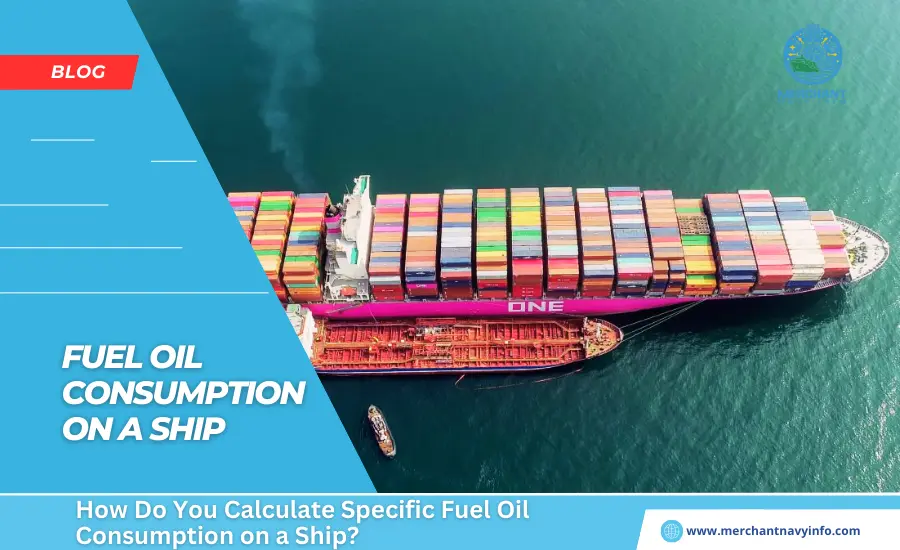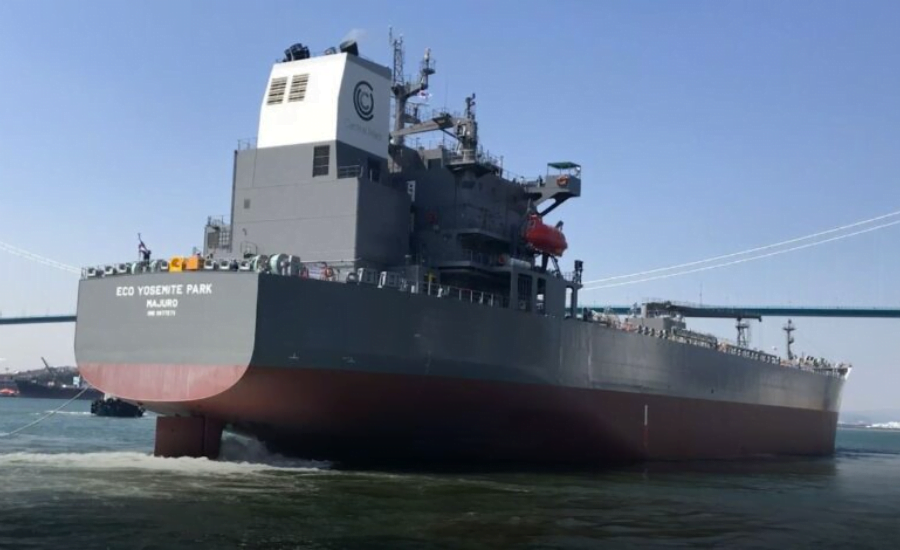
Calculating fuel consumption on board and keeping records is one of the most important duties. The chief engineer is responsible for this. Fuel oil is provided by the ship’s charterer, and the chief engineer must report. To the charterer daily on the amount of fuel oil consumed. The whereabouts on board, and what is needed for the next voyage. The method of reading a thermometer worksheet is briefly explained in this article. It explains the procedures for reading a thermometer worksheet, calculating annual values, and the measuring equipment used.
Measuring and Reporting Fuel Oil Consumption
When a flow meter is installed in a pipeline that supplies fuel to an emission source. (main engine, diesel generator, auxiliary engine) Boiler, etc. The reading of a thermometer worksheet is the main means of determining consumption. Flowmeter readings and fuel temperatures are recorded in the following. Excel spreadsheet at 12:00 (noon) each day of the vessel. Upon arrival (as listed in the arrival report) and upon departure (as listed on the departure report).
All correct formulas
In addition to reporting fuel consumption at noon each day and at the time of vessel entry and also departure. Reading a thermometer worksheets at the following events must also be recorded:
- At the end of the channel
- At the beginning of the channel and
- After the completion of each refueling operation
Fuel returned from the fuel oil drain tank or fuel oil overflow. The tank to the fuel/sedimentation tank is determined by location, arrival, and departure. It must be recorded in the report. This amount will be automatically deducted from your trip’s fuel consumption. For sources that are not equipped with flow meters or where flow meters are not operating. Bunker fuel tanks must be monitored onboard. This method requires tank measurements for all fuel tanks associated with the emission source. To be recorded in the engine room sounding log using tank sounding/level or also level indicators.
Consumption Must Be Recorded In An Excel Table
Additionally, the amount of fuel in all fuel tanks on board the ship. Must be determined periodically according to at least the following schedule:
- Quantity can be determined using a fixed measuring system, if available, or by manual bearing.
- Every time a ship arrives at a berth and also every time it departs from a berth.
Before Bunkering/Debunkering
After Bunkering/Debunkering Position, Arrival, Departure Reports Position. Arrival and departure Reports in a Company’s Reporting Infrastructure for Vessels are the most important means of reporting MRV. Relevant data includes fuel consumption, transport work, and other travel-related data. Position reports must be made daily at 12:00 PM.(Noon) Shipping time if the ship is at sea or in port. There is an interval of less than 24 hours (average ship time) between two position reports. Or between a position report and an arrival report, or between a departure report and the next position report, or between a departure report and an arrival report. Generally, a user cannot submit a report if the gap is more than 24 hours and must first submit the missing report (where the gap is less than or equal to her 24 hours).
Arrival Reports To A Particular Port Or Offshore
The location must be followed by departure reports from the same port or offshore location. If the port name or offshore name is different from the arrival report, you will not be able to submit the departure report. In addition to position, arrival, and departure reports, other related periodic reports such as midday reports, monthly reports, and quarterly reports should also be created according to the format of the company’s marine reporting infrastructure.
Determination Of Bunkered Fuel And Fuel In Tanks
The quantity of bunkered fuel specified on the Bunker Bill (BDN) shall be determined by measuring all fuel tanks on board before and after the completion of bunkering operations and determining the appropriate density. Shall be verified by application. Determination of correction factors for temperature and quantities in metric tons before and after bunkering. The value of fuel filled into a ship is the difference between the amount of fuel before and after filling. The ship number is considered the relevant quantity of fuel stored and is the quantity entered by the seafarer in the sailing report. A written record detailing the ship’s fore and aft soundings of all fuel tanks and calculations showing the number of ships in metric tons. Refueled quantities shall be stored on board.
Measuring And Reporting Distance
Traveled Distance traveled must be measured on the ground between departure and arrival and reported in the position report and arrival report. Distance traveled over the ground can be determined via ECDIS or GPS or by manual measurements on a map. Distance to the water surface must also be noted in the location and arrival report and can be found in the (above water) speed log.
How To Measure Operation Time
The “operation time” from the last berth at the departure port to the first berth at the arrival port is calculated using the “departure/arrival time (GMT), “departure time/arrival time (GMT),” and “date.” (GMT)”. Arrival,” reported. Time and date must be recorded in both GMT and SMT. Arrival time is the length of stay from the first berth at the arrival port to the last berth at the departure port. This includes berth time, berth time, and time spent maneuvering in port. Fuel flow meters, fixed tank gauges, and temperature meters/gauges must be tested and calibrated for accuracy at the manufacturer’s recommended intervals or as specified in the PMS.
After these tests, a calibration certificate must be issued and kept on board. The validity of the calibration certificate is checked as part of the annual internal audit. Emission factor CF is the dimensionless conversion factor between kerosene consumption and CO2 emissions in the Guidelines 2014 on how to calculate the achieved energy efficiency design index (EEDI) for new ships.
The total annual amount of CO2 is calculated by multiplying the annual consumption of kerosene by the CF, depending on the fuel type. Information submitted to the IMO database on ships’ fuel oil consumption From 2019, all ships over 5000 gross tonnage will be required to collect and submit to IMO certain information about the ship and its fuel. This includes vessel data, the period of the calendar year during which the data is transmitted, kerosene consumption (tons), kerosene type and method of collecting kerosene consumption data, distance traveled, and travel time. This data provided by vessels helps summarize the fuel oil consumption of all vessels and is used for research and finding ways to reduce emissions and pollution reading a thermometer worksheet.










